Best PHP MySQL Integration Tools to Buy in December 2025
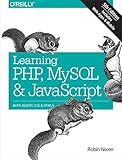
Learning PHP, MySQL & JavaScript: With jQuery, CSS & HTML5 (Learning PHP, MYSQL, Javascript, CSS & HTML5)


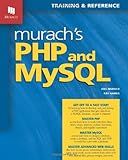
Murach's PHP and MySQL: Training & Reference
- MINT CONDITION: BRAND NEW, HIGH-QUALITY PRODUCT GUARANTEED!
- SAME-DAY DISPATCH FOR ORDERS BEFORE 12 NOON-FAST DELIVERY!
- HASSLE-FREE: GUARANTEED PACKAGING AND NO QUIBBLES RETURNS!



PHP: Learn PHP in One Day and Learn It Well. PHP for Beginners with Hands-on Project. (Learn Coding Fast with Hands-On Project Book 6)


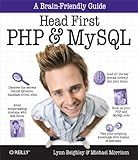
Head First PHP & MySQL: A Brain-Friendly Guide


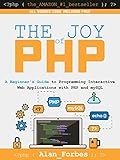
The Joy of PHP: A Beginner's Guide to Programming Interactive Web Applications with PHP and mySQL



PHP & MYSQL: Courses and corrected exercises: Master dynamic web development


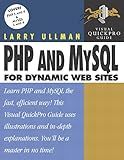
PHP and MySQL for Dynamic Web Sites: Visual QuickPro Guide


To connect PHP with MySQL, you can use the MySQLi extension, which stands for MySQL Improved. Here's how you can establish a connection:
- Start by creating a new PHP file. You can name it whatever you prefer, but let's call it "connect.php" for the sake of this explanation.
- Open "connect.php" in a text editor and begin by defining the necessary variables required to connect to the MySQL database. The variables include the hostname, username, password, and database name. Here's an example:
Remember to replace hostname, username, password, database, and table_name with the actual values corresponding to your MySQL database.
How do you handle connection errors while connecting PHP with MySQL?
When connecting PHP with MySQL, you can handle connection errors by using try-catch blocks and appropriate error handling mechanisms. Here's a general approach to handle connection errors:
- Use the mysqli or PDO extension: These extensions provide methods to interact with MySQL and handle connection errors. It's recommended to use either extension instead of the deprecated mysql extension.
- Establish the connection: Use the appropriate method (mysqli_connect, mysqli::__construct, PDO::__construct, etc.) to establish the connection with the MySQL server. This usually involves specifying the hostname, username, password, and database name.
- Enclose connection code in a try-catch block: Wrap the connection code within a try-catch block to catch any possible connection errors. In PHP, you can catch the mysqli_sql_exception or PDOException based on the extension used.
try { // Connection code using mysqli or PDO } catch (mysqli_sql_exception $e) { // mysqli extension // Handle mysqli connection error echo "Connection failed: " . $e->getMessage(); } catch (PDOException $e) { // PDO extension // Handle PDO connection error echo "Connection failed: " . $e->getMessage(); }
- Perform error handling: Write appropriate error handling code within the catch block. This can include displaying an error message, logging the error, or providing alternative actions.
echo "Connection failed: " . $e->getMessage(); // or Log the error // or Redirect to a custom error page // or Provide an alternative action
- Gracefully handle connection failures: In case of connection errors, ensure that you gracefully handle the situation to avoid exposing sensitive information to users. Avoid displaying detailed error messages, and instead, log the error for debugging purposes.
Overall, by using try-catch blocks and applying suitable error handling techniques, you can effectively handle connection errors while connecting PHP with MySQL.
How do you update existing records in MySQL tables using PHP?
To update existing records in MySQL tables using PHP, you can follow these steps:
- Connect to the MySQL database using the mysqli_connect() function. Make sure to provide the correct database credentials.
$connection = mysqli_connect("localhost", "username", "password", "database"); if (!$connection) { die("Connection failed: " . mysqli_connect_error()); }
- Prepare an SQL query to update the records. Use the UPDATE statement combined with the SET keyword to specify the fields to update and their new values. You can also include a condition to select the specific records to update with the WHERE clause.
$sql = "UPDATE table_name SET field1 = 'new_value1', field2 = 'new_value2' WHERE condition";
In the above example, replace table_name with the name of your table, field1 and field2 with the names of the fields you want to update, 'new_value1' and 'new_value2' with the new desired values, and condition with a condition to identify the records to update.
- Execute the SQL query using the mysqli_query() function and pass the database connection and the SQL query as parameters.
if (mysqli_query($connection, $sql)) { echo "Records updated successfully."; } else { echo "Error updating records: " . mysqli_error($connection); }
- Close the database connection using the mysqli_close() function.
mysqli_close($connection);
Make sure to replace the $connection variable with the actual variable name you used for your database connection in step 1.
Note: It is essential to properly sanitize and validate any user input before using it in an SQL query to prevent SQL injection attacks.
What are some common pitfalls or mistakes to avoid when connecting PHP with MySQL?
There are several common pitfalls or mistakes to avoid when connecting PHP with MySQL:
- Using deprecated functions: It is important to use the modern and recommended functions to connect to MySQL. Avoid using deprecated functions like mysql_connect() and instead use mysqli or PDO.
- Not sanitizing user input: Always sanitize user input before passing it to the MySQL queries to prevent SQL injection attacks. Use prepared statements or parameterized queries to achieve this.
- Hardcoding database credentials: Storing database credentials in the source code is a security risk. Instead, use configuration files outside the document root and include them when necessary.
- Failing to handle errors: Make sure to handle errors properly when connecting to MySQL. Use error reporting and logging to troubleshoot any issues that may arise.
- Poor database design: It is crucial to design the database schema correctly, defining proper relationships and indexes. Failing to do so can lead to inefficient queries and slow performance.
- Not closing database connections: Always close the database connection explicitly after you have finished using it. Leaving connections open can consume server resources and degrade performance.
- Not considering performance optimization: Optimize your queries by using appropriate indexes, using efficient data retrieval techniques, and minimizing the number of database roundtrips.
- Ignoring security best practices: Apart from sanitizing user input, ensure that MySQL user privileges are restricted to the necessary operations and that passwords are hashed and salted.
- Not handling data encoding properly: Make sure to set the appropriate character encoding for your database connection to avoid data corruption or display issues with special characters.
- Neglecting to backup the database: Regularly backup your MySQL database to prevent data loss in case of any unforeseen events.
By being aware of these common pitfalls and mistakes, you can ensure a more secure, efficient, and reliable connection between PHP and MySQL.
Can you provide an example of fetching a single row of data from MySQL using PHP?
Certainly! Here is an example of fetching a single row of data from MySQL using PHP:
Make sure to replace the your_username, your_password, your_database_name, your_table_name, column_name, desired_value, column1_name, and column2_name placeholders with the appropriate values.
What are the different ways to handle MySQL connection errors in PHP?
There are several ways to handle MySQL connection errors in PHP:
- Using die() or exit(): You can use the die() or exit() functions to terminate the script execution and display a custom error message when a connection error occurs. For example:
$link = mysqli_connect($host, $user, $password, $database);
if (!$link) { die('Connection error: ' . mysqli_connect_error()); }
// Rest of the code
- Using try-catch block: You can use a try-catch block to catch any exceptions that may occur during the connection process. This allows you to handle the error gracefully by displaying a custom error message or performing any necessary cleanup operations. For example:
try { $link = mysqli_connect($host, $user, $password, $database); } catch (mysqli_sql_exception $e) { echo 'Connection error: ' . $e->getMessage(); }
// Rest of the code
- Using error handling functions: You can use the mysqli_errno() and mysqli_error() functions to retrieve the error code and error message respectively. You can then display a custom error message based on these values. For example:
$link = mysqli_connect($host, $user, $password, $database);
if (!$link) { $errorCode = mysqli_errno($link); $errorMessage = mysqli_error($link); echo 'Connection error: ' . $errorMessage . ' (Error code: ' . $errorCode . ')'; }
// Rest of the code
- Using error reporting settings: You can configure the error reporting settings in PHP to display or log the errors automatically. You can do this by setting the error_reporting directive in your php.ini file or using the ini_set() function in your PHP code. For example:
ini_set('display_errors', 1); ini_set('display_startup_errors', 1); error_reporting(E_ALL);
$link = mysqli_connect($host, $user, $password, $database);
// Rest of the code
Note that in all these methods, it is recommended to handle connection errors appropriately by displaying user-friendly error messages or logging them for debugging purposes.
How do you disconnect PHP from MySQL after the required operations are completed?
In PHP, after performing the necessary operations with MySQL, you can disconnect from the database using the mysqli_close() function or the [PDO::null](https://phparea.com/blog/how-to-show-a-not-null-column-in-mysql) function depending on the database extension you are using. Here's an example of using both methods:
Using mysqli extension:
// Create a connection $mysqli = new mysqli("localhost", "username", "password", "database");
// Check connection if ($mysqli->connect_error) { die("Connection failed: " . $mysqli->connect_error); }
// Perform operations
// Disconnect from MySQL mysqli_close($mysqli);
Using PDO extension:
// Create a connection $dsn = "mysql:host=localhost;dbname=database"; $username = "username"; $password = "password";
try { $pdo = new PDO($dsn, $username, $password); $pdo->setAttribute(PDO::ATTR_ERRMODE, PDO::ERRMODE_EXCEPTION);
// Perform operations
// Disconnect from MySQL
$pdo = null;
} catch (PDOException $e) { die("Connection failed: " . $e->getMessage()); }
Both methods will close the connection and release any associated resources. It's important to close the connection when you are done with your database operations to free up system resources and prevent any potential issues with too many open connections.
